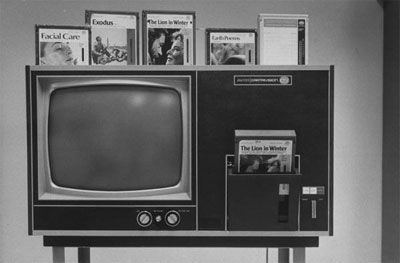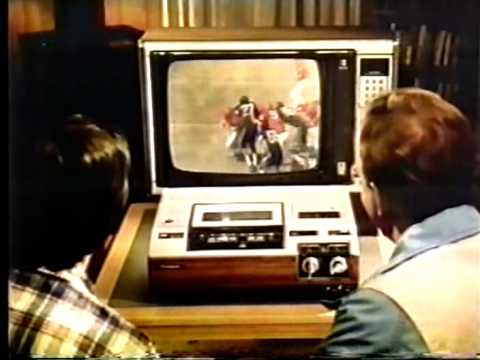The VCR, which helped the masses shift time and become programmers, is no more, with the last company that produced the technology, Japan’s Funai Corporation, bowing from the anachronistic business.
Excerpts follow from 1) Jonah Engel Bromwich’s New York Times article “The Long, Final Goodbye of the VCR,” and 2) Lillian Ross’ 1970 New Yorker piece (subscription required) about the Cartrivision system, which offered a proto-Netflix service.
From Bromwich:
In 1956, Ampex Electric and Manufacturing Company introduced what its website calls “the first practical videotape recorder.” Fred Pfost, an Ampex engineer, described demonstrating the technology to CBS executives for the first time. Unbeknown to them, he had recorded a keynote speech delivered by a vice president at the network.
“After I rewound the tape and pushed the play button for this group of executives, they saw the instantaneous replay of the speech. There were about 10 seconds of total silence until they suddenly realized just what they were seeing on the 20 video monitors located around the room. Pandemonium broke out with wild clapping and cheering for five full minutes. This was the first time in history that a large group (outside of Ampex) had ever seen a high-quality, instantaneous replay of any event.”Fred Pfost “First Public Video Tape Recorder Demonstrations” (Web 84) Video by Audio Engineering Society (AES)
At the time, the machines cost $50,000 apiece. But that did not stop orders from being placed for 100 of them in the week they debuted, according to Mr. Pfost. “This represented an amount almost as great as a year’s gross income for Ampex,” he wrote.
The first VCRs for homes were released in the 1960s, and they became widely available to consumers in the 1970s, when Sony’s Betamax and JVC’s VHS formats began to compete. VHS gained the upper hand the following decade; but Sony stopped producing Betamax cassette tapes only in 2016.•


From Ross’ conversation with Cartrivison executive Samuel Gelfman, who realized way back then what a disruptive technology he was working with:
“What is Cartrivision?” we asked.
“One of the greatest instruments of social change–the greatest, I would say, since the printing press,” Mr. Gelfman said. “Our set is a color-television set, but it’s also a cartridge-television. With this set, you can have your own cartridge library. You slip a cartridge in the slot, press the button, and watch up to two hours of your own choice of movie. A great football game. Anything you want. What’s more, we’ve built in an off-the-air recorder to pick up shows when you’re not at home. It doubles as a camera with a portable microphone. You can make your movies and have instant replay. We’ll sell you the set for between eight and nine hundred dollars. Our cartridges–blank ones–from nine-ninety-eight for a fifteen-minute tape to twenty-four ninety-eight for a two-hour tape. The movie cartridges we’ll rent. Three dollars for overnight. What’s important is for the first time we’re going to be able to provide what you want to see. You don’t have to worry about sponsors anymore.”•
Here’s a What’s My Line? episode in which the system is demonstrated by company spokesperson Art Rosenblatt in 1972, the year it came to the market and the one before it was pulled.

